Abstract
A case-control study was conducted in Yaoundé, United Republic of Cameroon, to evaluate the hypothesis that intramuscular inoculations predisposed young children to paralysis if they were later exposed to poliomyelitis virus. Thirty-three cases with lower motor neuron disease and 66 neighbourhood controls were studied. Poliovirus was isolated from 39% of the paralytic cases but from only 18% of the comparison group. Controls were more likely to have had serological evidence of previous exposure to all three poliovirus types while most of the paralytic cases had been exposed to a poliovirus for the first time. Two-thirds of the paralytic cases but only 11% of the comparison group had been ill, visited a medical facility, and received multiple injections, primarily with quinine and penicillin, in the month prior to the onset of poliomyelitis. There was a strong temporal relationship between these injections and the onset of paralysis. The increased relative risks (15 and 32, respectively) of paralysis associated with inoculations in the two weeks immediately prior to onset of disease were felt to represent the treatment of symptoms related to poliomyelitis. However, the increased relative risks (13 and 27, respectively) three and four weeks prior to onset were felt to be consistent with the hypothesis that intramuscular injections provoked paralysis. Overestimation of this measure of the effect because of bias in the control group is discussed.
Full text
PDF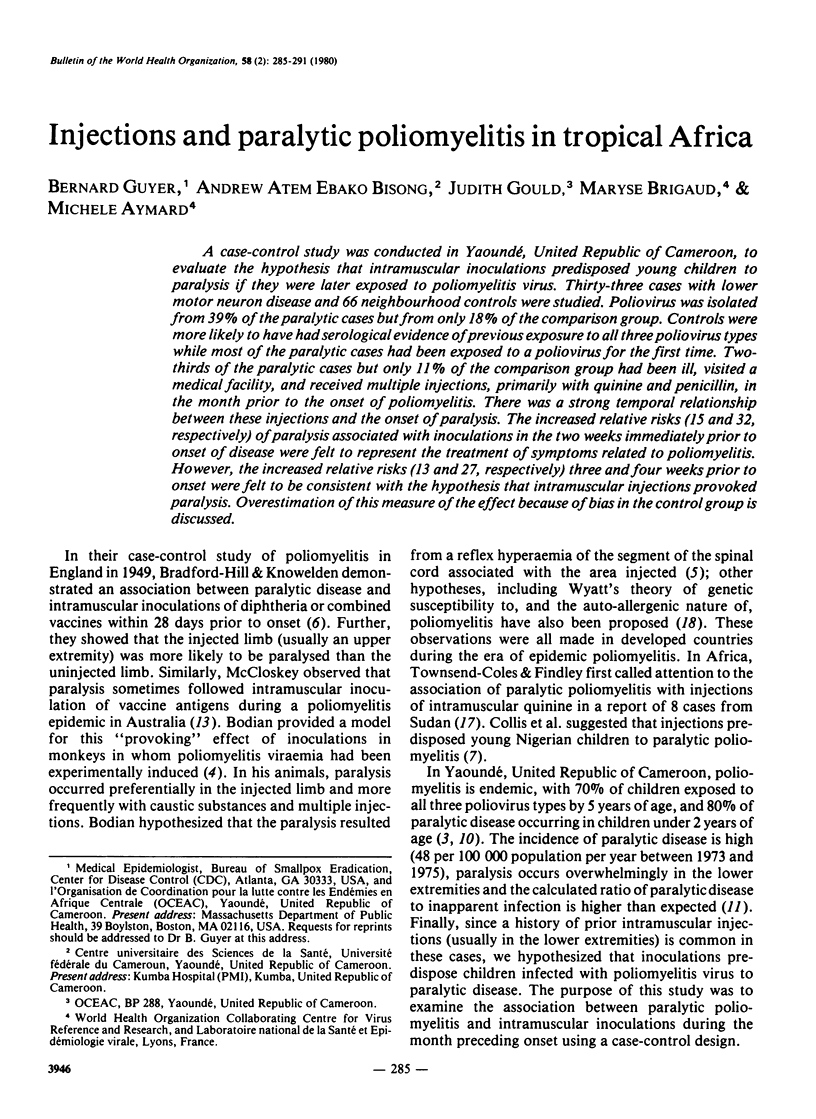
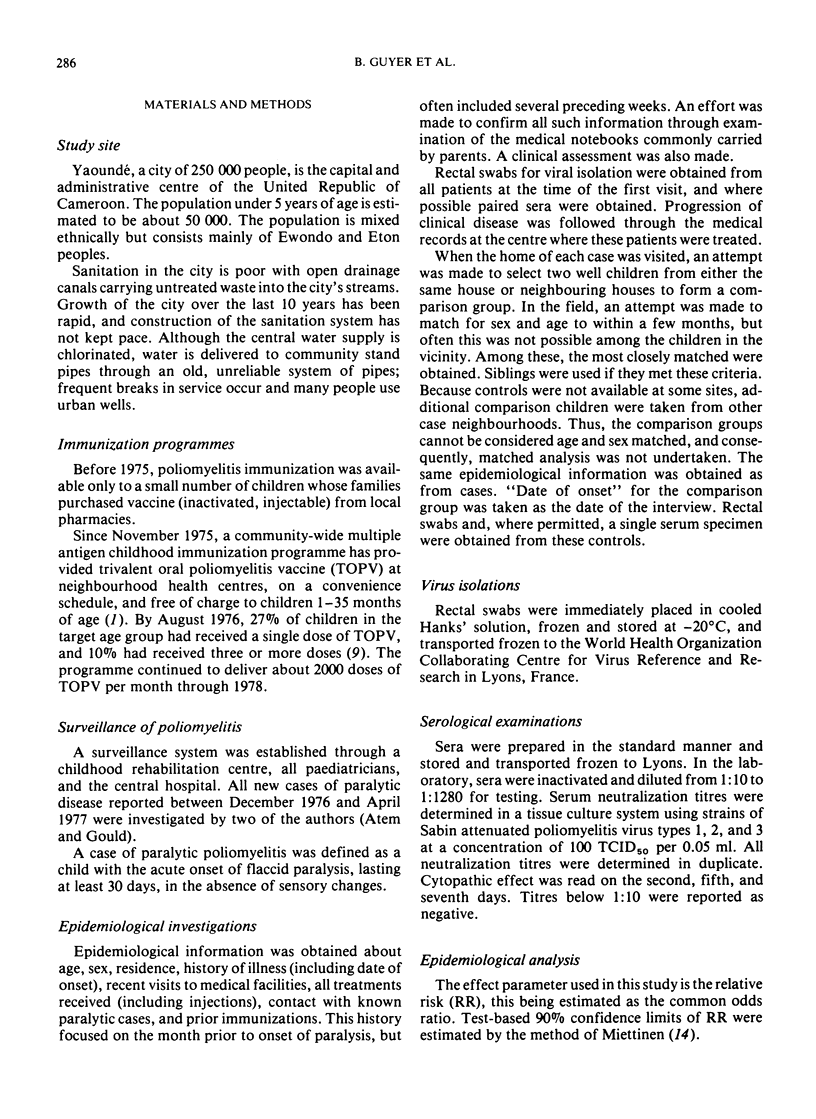
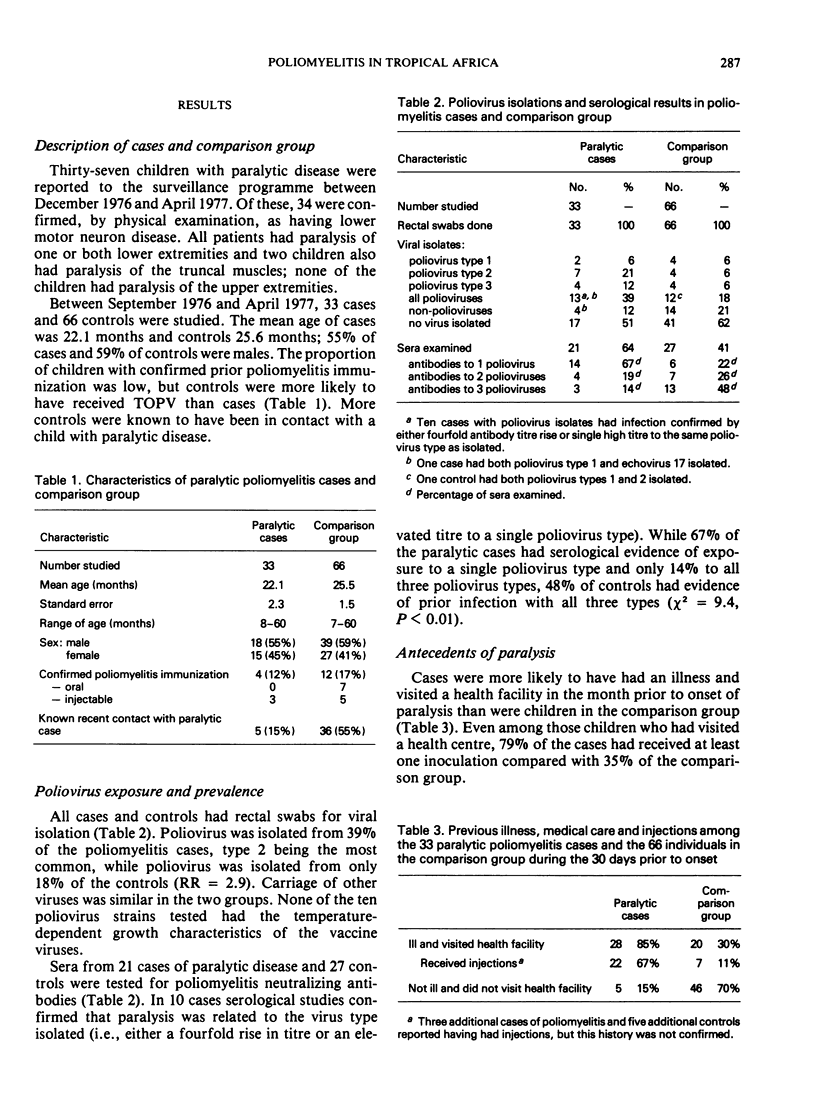
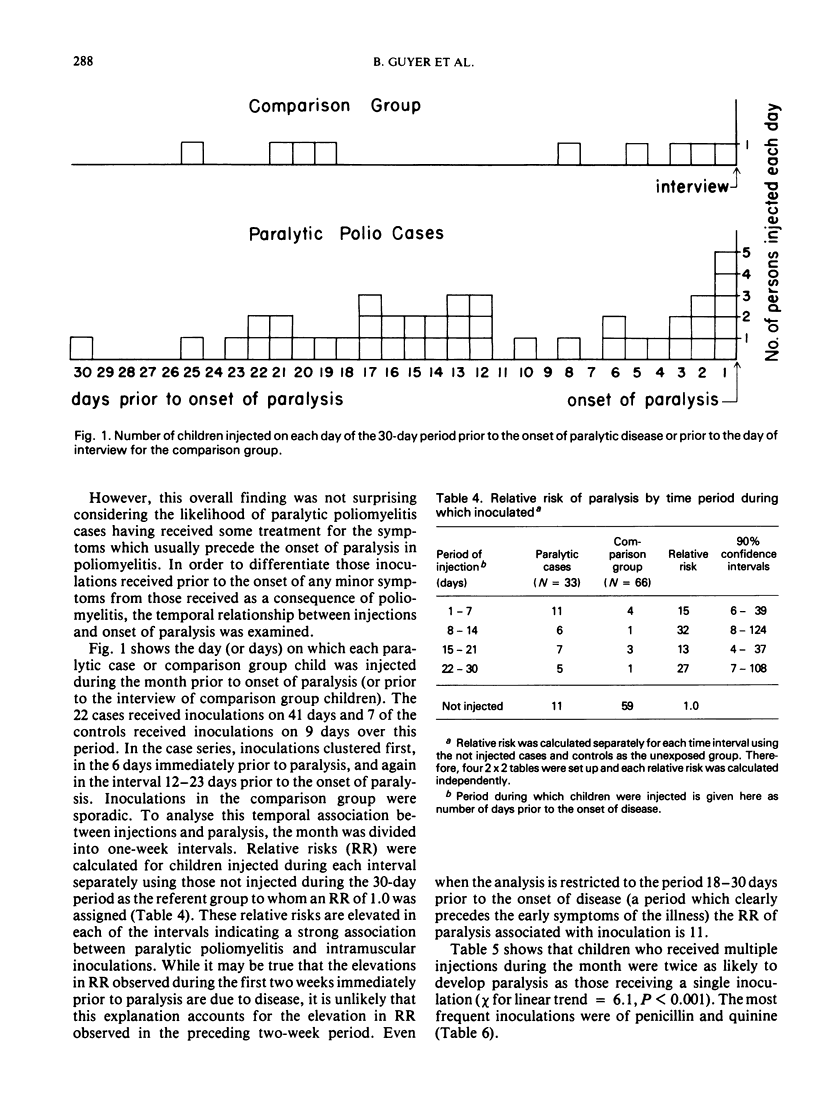
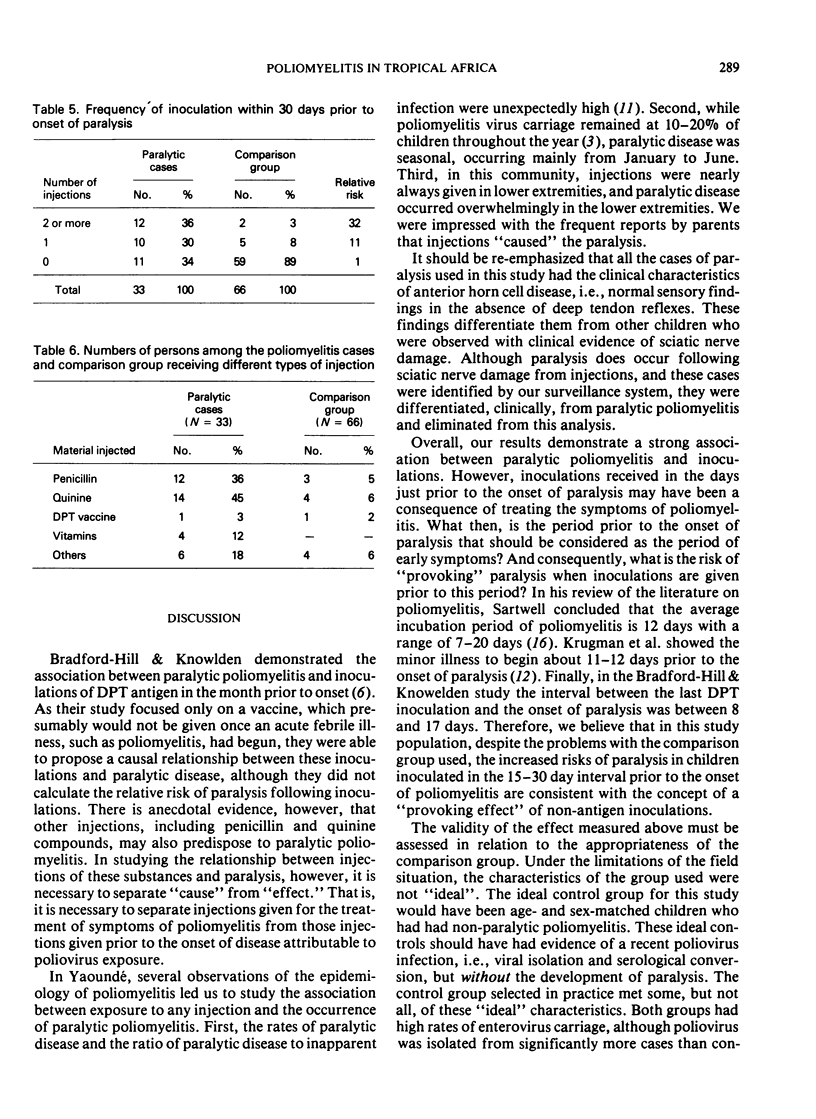
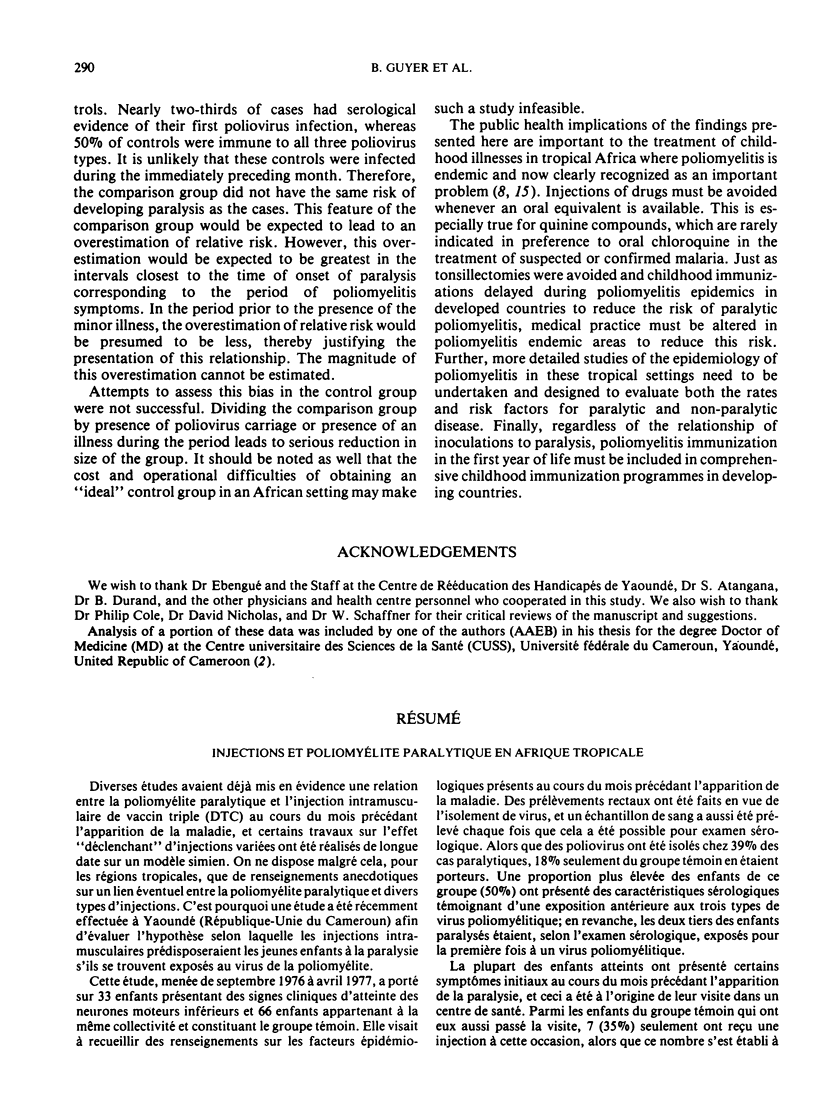
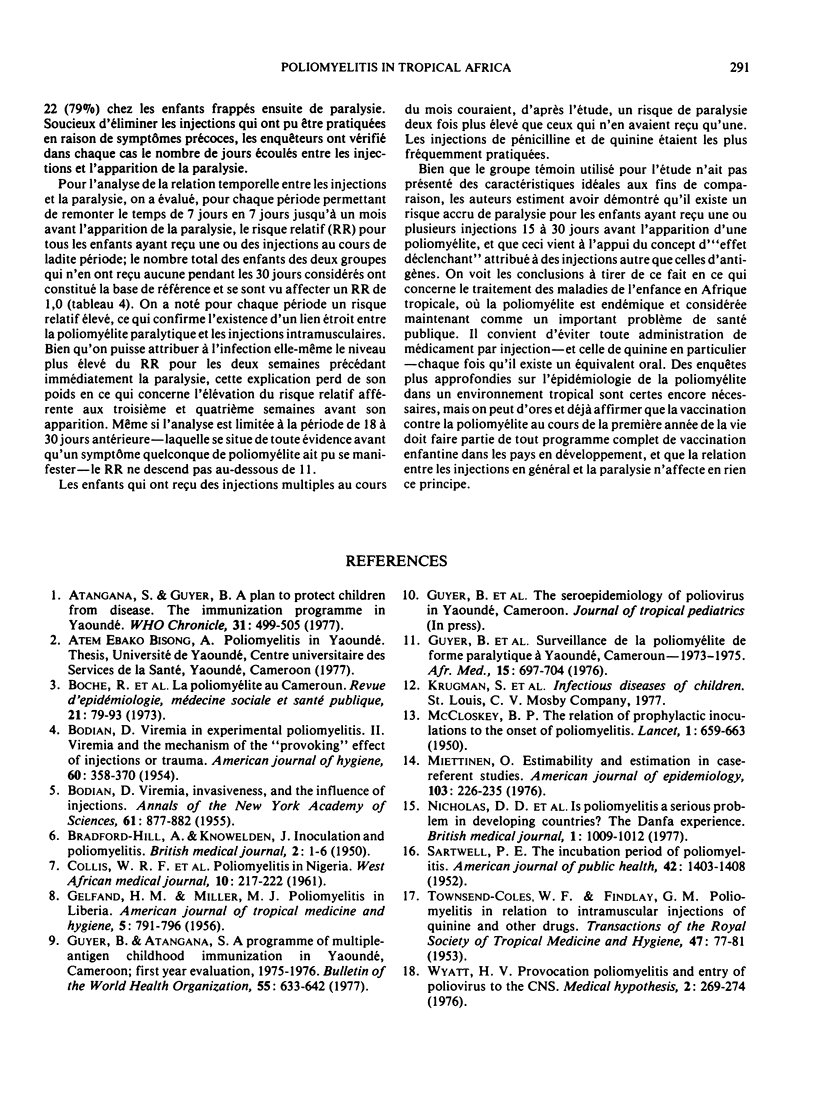
Selected References
These references are in PubMed. This may not be the complete list of references from this article.
- Atangana S., Guyer B. A plan to protect children from disease. The immunization programme in Yaoundé. WHO Chron. 1977 Dec;31(12):499–505. [PubMed] [Google Scholar]
- BODIAN D. Viremia in experimental poliomyelitis. II. Viremia and the mechanism of the provoking effect of injections or trauma. Am J Hyg. 1954 Nov;60(3):358–370. [PubMed] [Google Scholar]
- COLLIS W. R., RANSOME-KUTI O., TAYLOR M. E., BAKER L. E. Poliomyelitis in Nigeria. West Afr Med J. 1961 Aug;10:217–222. [PubMed] [Google Scholar]
- Guyer B., Atangana S. A programme of multiple-antigen childhood immunization in Yaoundé, Cameroon: first-year evaluation, 1975-1976. Bull World Health Organ. 1977;55(5):633–642. [PMC free article] [PubMed] [Google Scholar]
- Nicholas D. D., Kratzer J. H., Ofosu-Amaah S., Belcher D. W. Outside Europe. Is poliomyelitis a serious problem in developing countries?--the Danfa experience. Br Med J. 1977 Apr 16;1(6067):1009–1012. doi: 10.1136/bmj.1.6067.1009. [DOI] [PMC free article] [PubMed] [Google Scholar]
- SARTWELL P. E. The incubation period of poliomyelitis. Am J Public Health Nations Health. 1952 Nov;42(11):1403–1408. doi: 10.2105/ajph.42.11.1403. [DOI] [PMC free article] [PubMed] [Google Scholar]
- TOWNSEND-COLES W. F., FINDLAY G. M. Poliomyelitis in relation to intramuscular injections of quinine and other drugs. Trans R Soc Trop Med Hyg. 1953 Jan;47(1):77–81. doi: 10.1016/0035-9203(53)90027-3. [DOI] [PubMed] [Google Scholar]
- Wyatt H. V. Provocation poliomyelitis and entry of poliovirus to the CNS. Med Hypotheses. 1976 Nov-Dec;2(6):269–274. doi: 10.1016/s0306-9877(76)80007-2. [DOI] [PubMed] [Google Scholar]


